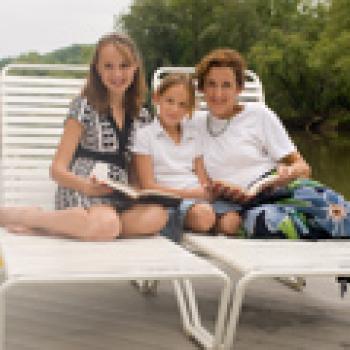Let's Go on a Reading Hunt!

- Preview |
- Get Started |
- Comments
Activity Description
In this activity, children go on a hunt for places where they can read and enjoy books: on a family road trip, at the pool, at the doctor's office. After exploring places to read, children compose their own books modeled on the rhythm and rhyme of Green Eggs and Ham by Dr. Seuss.
Why This Is Helpful
The more children read, the stronger they become as readers. One of the best ways to encourage children to read is to ask them to think of themselves as readers. As children complete their hunt for places to read in this activity, they imagine themselves as readers in a variety of different environments. As a result, children not only identify places they can read during the summer months but they also strengthen their self-confidence in their literacy skills.
This activity was modified from the ReadWriteThink lesson plan "Reading Everywhere with Dr. Seuss."
What You Need
- Paper and pen or pencil
- Computer with Internet access (optional)
- Art supplies, such as crayons, markers, finger paint
- Green Eggs and Ham by Dr. Seuss
Here's What To Do
- Read Green Eggs and Ham several times, over the course of several days, until the child can join you in reading the story.
- Mark the book on the I'm a Reading Star Chart.
- Ask the child to help you write a book about all the places that you can read, using the same rhythm and rhyme that is used in Green Eggs and Ham.
- Start out with some examples to show the child what the book will be like:
I can read in the hall.
I can read at the mall.I can read on Daddy's lap.
I can read after my nap. - Print out a Stapleless Book to use like a notepad or create a book using stapled pieces of paper to record a list of places where the child can read. Encourage the child to be specific. For instance, if the child responds that she can read in the house, ask her where she reads in the house. See the instructional video for more information.
- Once you have gathered a list of five or six places, ask the child to go with you on a hunt for even more places to read. Take along your original list , and add the new places that you find. Take as much time as you like to conduct your hunt.
- You might start your search with places where the child can read often, such as places in the child's home or day care.
- You can expand your search to include local parks or the library.
- Additionally, you can ask the child to think of things she might do at the same time as she reads (for instance, "I can read while I eat").
- When you and the child have finished hunting for places to read, read through the list together and look for ways to make rhyming pairs like those in the examples.
- Together, choose at least five rhymed pairs of places to read.
- Write each of the places on a separate piece of paper.
- Using the art supplies, invite the child to illustrate the reading place, drawing herself reading in the location. As an alternative, if you have a camera available you might take pictures of the child reading in the different places and use the photos to illustrate the book.
- Occasionally return to the book of places to read, and ask the child to tell you about books she has read in the places that are listed.
- Keep the list of places to read that you gathered on your search, and add to it later to extend the activity. As time passes, if there are places on the list that the child has not read, take advantage of the opportunity to read together in the location.
More Ideas To Try
- View one first-grade class's favorite places to read in the video Reading, Reading Everywhere. If resources allow, create a similar video of places your child enjoys reading.
- Share each family member's favorite reading materials. (This helps children see that some people like magazines best, some cookbooks, others newspapers, journals, or technical manuals, while still others like comic books, fiction, or poetry.) Family members can also share favorite authors and their favorite places to read.
Add new comment